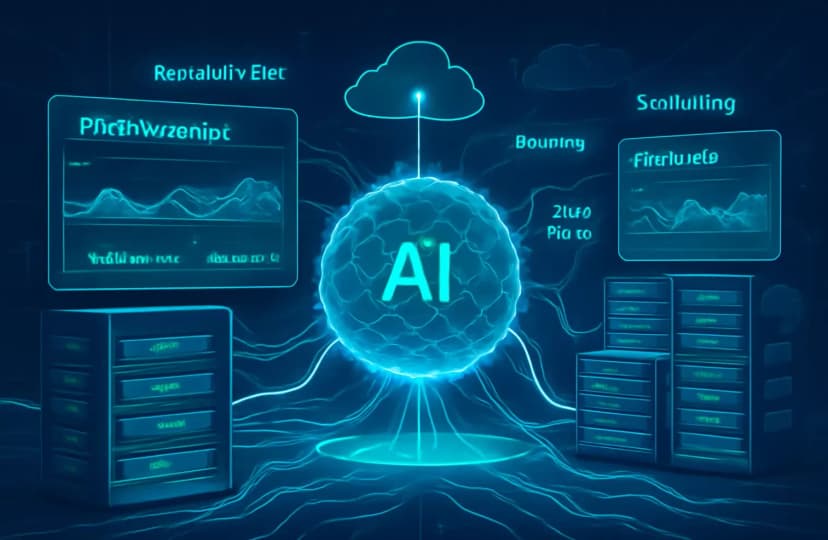Artificial Intelligence is no longer a lab experiment — it’s in fraud detection systems, autonomous vehicles, recommendation engines, medical imaging, and generative assistants.
But here’s the catch: even the smartest AI model fails if it’s slow, unstable, or unable to scale in real-world conditions.
Performance testing for AI is about more than raw speed — it’s about making sure models are responsive, resource-efficient, and dependable under varying loads, across hardware, and in production-like conditions.
Why AI Performance Testing Is Mission-Critical
In modern digital systems, latency equals user trust.
- A 200ms delay in a chatbot can cause frustration and drop-offs.
- A 2-second delay in a fraud detection API can lead to financial losses.
- A 5-second pause in an autonomous system can be life-threatening.
Without systematic performance testing, even a high-accuracy AI model can fail in production — causing user dissatisfaction, revenue loss, and compliance risks.
Objectives of AI Performance Testing
AI performance testing focuses on:
- Latency Validation – Ensure response times meet SLA and UX expectations.
- Scalability Checks – Maintain consistent performance as user load increases.
- Resource Efficiency – Optimize CPU, GPU, and memory usage.
- Throughput Benchmarking – Handle required predictions per second without errors.
- Deployment Readiness – Validate model behavior in real-world environments.
Key Metrics That Define AI Performance
Testing AI isn’t just about “how fast it runs” — it’s about how well it runs under pressure.
- Inference Latency (Avg / P95 / P99) – Time taken for predictions, including outliers.
- Throughput (Requests/sec) – Prediction rate at peak traffic.
- Cold Start Time – Crucial for serverless and edge deployments.
- Memory Footprint – RAM/GPU memory required per request.
- Model Size – Affects load times on mobile and edge devices.
- CPU/GPU Utilization – Helps identify bottlenecks.
- Batch Processing Efficiency – Gains from grouping requests.
- Concurrency Limits – Max simultaneous requests without degradation.
Performance Factors Across AI Model Types
| Model Type | Performance Risk | Testing Focus |
| Computer Vision (CNNs) | High GPU memory usage | Image preprocessing, GPU throughput |
| NLP & LLMs | Tokenization & sequence latency | Long-sequence inference, batch processing |
| Recommender Systems | Candidate retrieval bottlenecks | Real-time ranking, caching |
| Generative AI | Token streaming rate | Response delay, hallucination under load |
| Time Series Models | Data window handling | Streaming data performance |
Each model type needs custom load profiles and targeted benchmarks.
Deployment Scenarios & Testing Strategies
1. Cloud AI Services
- Scale across geographies.
- Test auto-scaling, network latency, and failover readiness.
2. Edge & IoT AI
- Limited compute capacity.
- Test for offline performance, battery impact, and real-time inference.
3. On-Prem AI
- Predictable hardware but complex integration.
- Test multi-threading, resource contention, and API response chains.
4. Hybrid AI Systems
- Cloud + edge model splitting.
- Test data sync delay, fallback modes, and load balancing.
AI Performance Testing Tools
| Tool | Purpose |
| Locust / JMeter / Artillery | API stress & load testing |
| TensorRT / ONNX Runtime | Model optimization |
| NVIDIA Triton Server | Multi-model serving |
| TorchServe / TensorFlow Serving | Inference serving |
| K6 / Gatling | Lightweight performance testing |
| Kubeflow Pipelines | Benchmarking in ML workflows |
Optimization Techniques for Faster AI
Model-Level Optimizations:
- Quantization – Reduce precision (e.g., FP32 → INT8) for faster inference.
- Pruning – Remove unnecessary weights without losing accuracy.
- Knowledge Distillation – Use a smaller student model for deployment.
Infrastructure-Level Optimizations:
- GPU & TPU Acceleration – For heavy computation.
- Batching Requests – To process more inferences per cycle.
- Caching Mechanisms – For repeated queries.
Real-World Use Cases of AI Performance Testing
- E-commerce Recommendation Engines – Validate real-time product suggestions under Black Friday traffic.
- Healthcare AI Diagnostics – Ensure MRI analysis is fast enough for emergency response.
- Fraud Detection in FinTech – Maintain sub-second decisioning at millions of transactions per hour.
- Voice Assistants – Reduce speech-to-response latency for natural conversations.
Best Practices for AI Performance Testing
- Benchmark early during development.
- Test across hardware (CPU-only, GPU-enabled, low-memory edge devices).
- Use real-world datasets for realistic performance profiling.
- Integrate performance checks in CI/CD pipelines.
- Monitor in production to catch regressions early.
Frequently Asked Questions (FAQs)
Q: Can I just test accuracy and skip performance testing?
No — an accurate model that’s too slow or unstable is unusable in production.
Q: My AI model is slow. Should I upgrade hardware?
Not always — try model compression, pruning, batching, or framework optimization first.
Q: How often should I run performance tests?
Every major model update, plus continuous monitoring in production.
Final Thoughts: Speed + Intelligence = AI Success
An AI system that’s accurate but slow is like a race car that stalls on the track — technically powerful but useless in competition.
Performance testing ensures your AI meets real-world speed, scalability, and stability demands — so it delivers value at scale, not just in the lab.
Test the Speed & Scale of Your AI with Testriq
We help you:
- Benchmark latency, throughput & concurrency
- Optimize for GPU, TPU, and edge environments
- Stress-test API endpoints for peak traffic
- Monitor and prevent performance regressions
About Jayesh Mistry
Expert in AI Application Testing with years of experience in software testing and quality assurance.
Found this article helpful?
Share it with your team!
